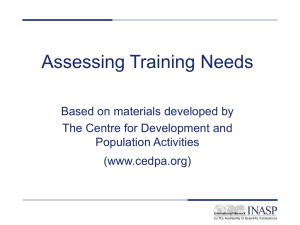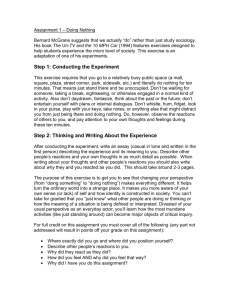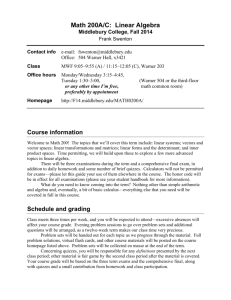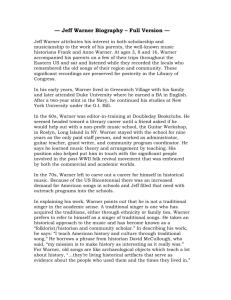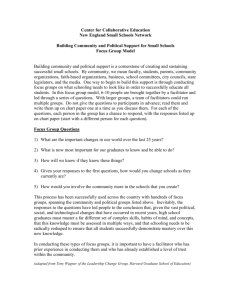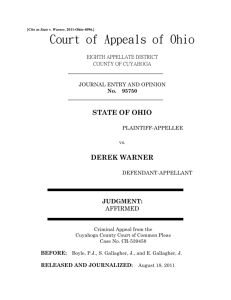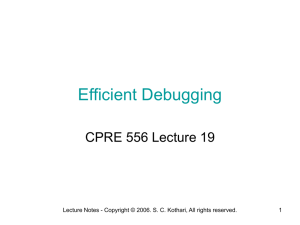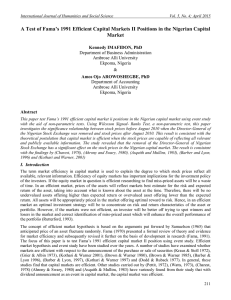EVENT STUDY METHODOLOGY IN CONDUCTING RESEARCH
advertisement
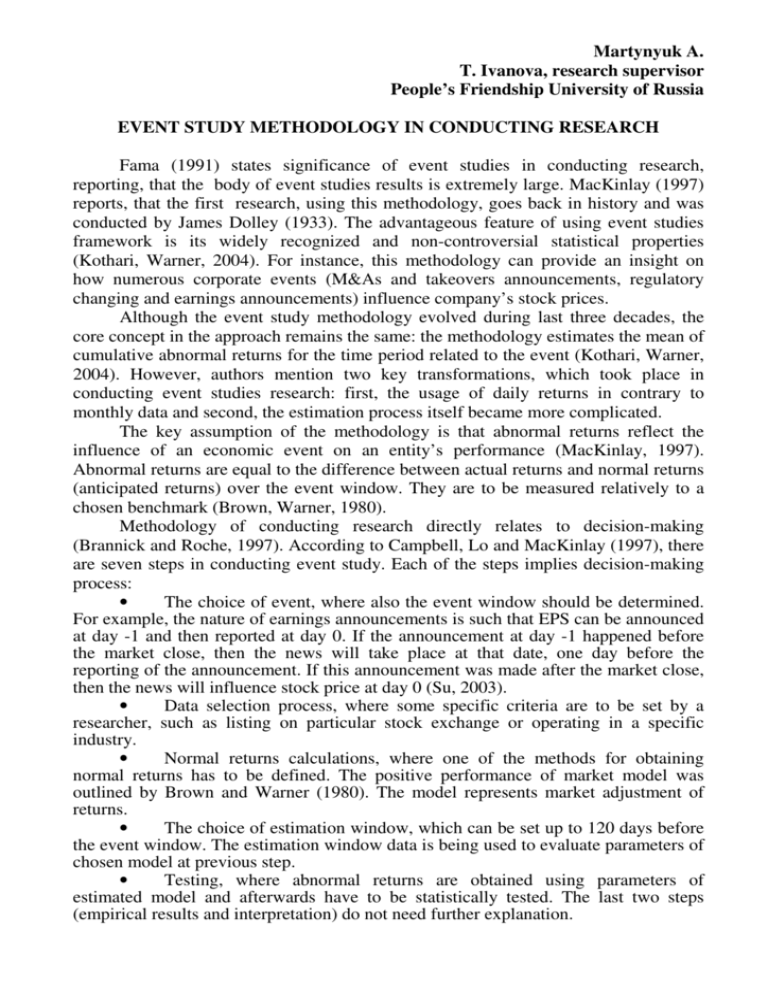
Martynyuk A. T. Ivanova, research supervisor People’s Friendship University of Russia EVENT STUDY METHODOLOGY IN CONDUCTING RESEARCH Fama (1991) states significance of event studies in conducting research, reporting, that the body of event studies results is extremely large. MacKinlay (1997) reports, that the first research, using this methodology, goes back in history and was conducted by James Dolley (1933). The advantageous feature of using event studies framework is its widely recognized and non-controversial statistical properties (Kothari, Warner, 2004). For instance, this methodology can provide an insight on how numerous corporate events (M&As and takeovers announcements, regulatory changing and earnings announcements) influence company’s stock prices. Although the event study methodology evolved during last three decades, the core concept in the approach remains the same: the methodology estimates the mean of cumulative abnormal returns for the time period related to the event (Kothari, Warner, 2004). However, authors mention two key transformations, which took place in conducting event studies research: first, the usage of daily returns in contrary to monthly data and second, the estimation process itself became more complicated. The key assumption of the methodology is that abnormal returns reflect the influence of an economic event on an entity’s performance (MacKinlay, 1997). Abnormal returns are equal to the difference between actual returns and normal returns (anticipated returns) over the event window. They are to be measured relatively to a chosen benchmark (Brown, Warner, 1980). Methodology of conducting research directly relates to decision-making (Brannick and Roche, 1997). According to Campbell, Lo and MacKinlay (1997), there are seven steps in conducting event study. Each of the steps implies decision-making process: • The choice of event, where also the event window should be determined. For example, the nature of earnings announcements is such that EPS can be announced at day -1 and then reported at day 0. If the announcement at day -1 happened before the market close, then the news will take place at that date, one day before the reporting of the announcement. If this announcement was made after the market close, then the news will influence stock price at day 0 (Su, 2003). • Data selection process, where some specific criteria are to be set by a researcher, such as listing on particular stock exchange or operating in a specific industry. • Normal returns calculations, where one of the methods for obtaining normal returns has to be defined. The positive performance of market model was outlined by Brown and Warner (1980). The model represents market adjustment of returns. • The choice of estimation window, which can be set up to 120 days before the event window. The estimation window data is being used to evaluate parameters of chosen model at previous step. • Testing, where abnormal returns are obtained using parameters of estimated model and afterwards have to be statistically tested. The last two steps (empirical results and interpretation) do not need further explanation. McCall and Bobko (1990) state, that none of the methods or approaches is superior to others, however the most important is to match a problem and methodology. References: 1. Brown, S. J. & Warner, J. B. (1980). Measuring security price performance. Journal of Financial Economics , 8, 205-208 2. Brannick, T. & Roche, W. K. (1997). Business research methods: strategies, techniques and sources. Dublin: Oak Tree Press 3. Dolley, J. C. (1933). Characteristics and Procedure of Common Stock Split-Ups. Harvard Business Review, 11, 316-326 4. Fama, E. (1991). Efficient capital markets: II. Journal of Finance, 46: 1575-1617 5. Kothari, S. P. & Warner, J. B. (2004). Econometrics of Event Studies. Elsevier/NorthHolland 6. MacKinlay, C. A. (1997). Event Studies in Economics and Finance. Journal of Economic Literature, Vol. XXXV, 13-39 7. McCall, M. W., & Bobko, P. (1990). Research methods in the service of discovery. Palo Alto: Consulting Psychologists Press 8. Su, D. (2003). Stock price reactions to earnings announcements: evidence from Chinese markets. Review of Financial Economics, 12, 271-286



